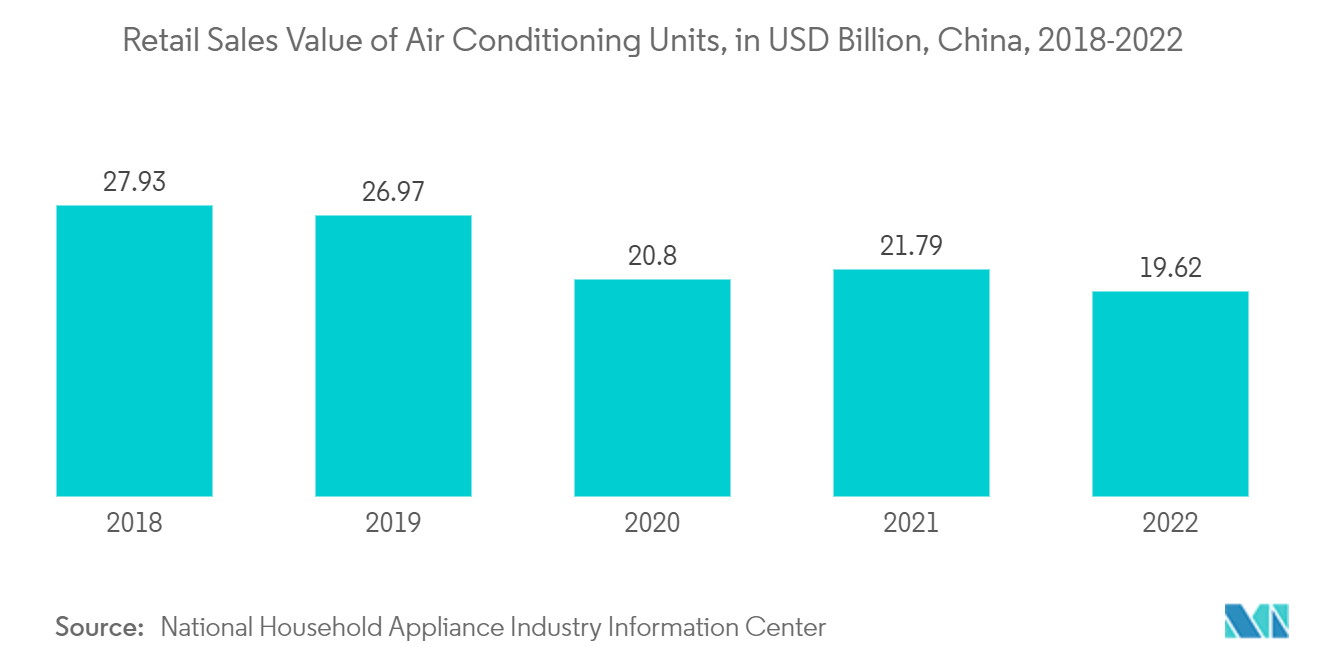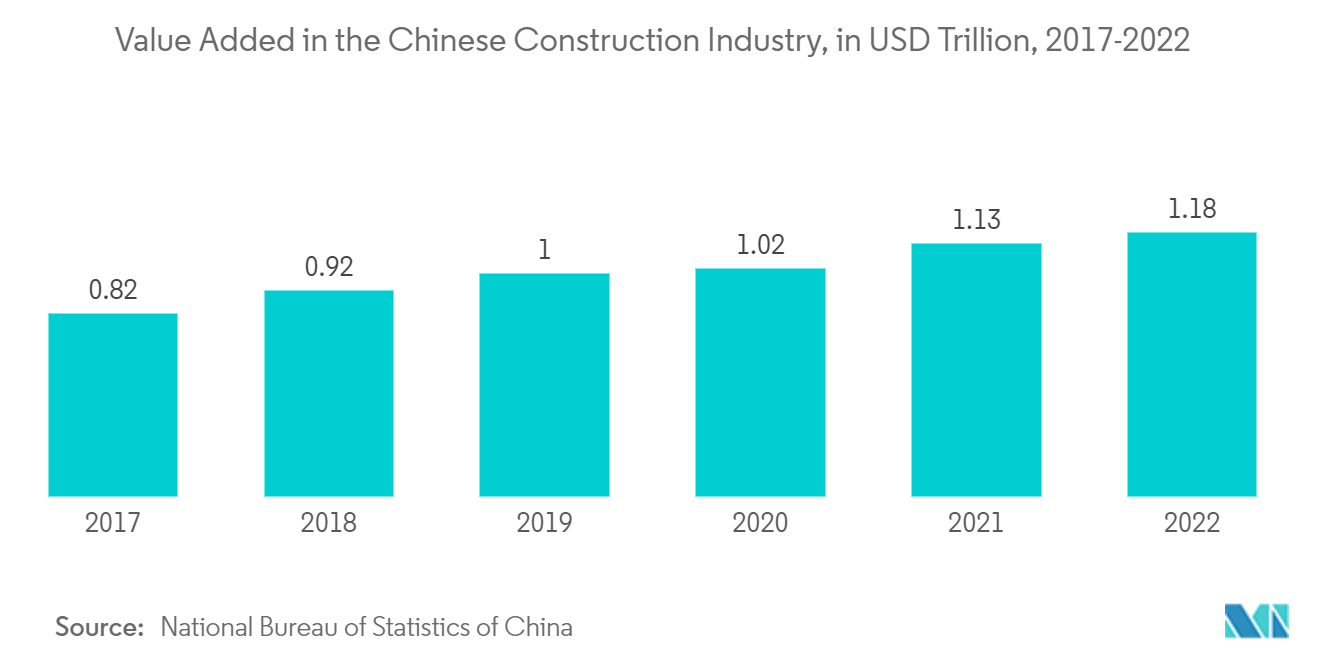Market Trends of China HVAC Field Device Industry
Control Valve Holding Significant Market Share
- A control valve is a mechanical device that initiates a change in the flow of fluids within a system. Its shape is similar to that of a butterfly or ball. They are all equipped with actuators that move a modulating element, which can be a butterfly or ball, to control fluid flow as well as gases. It helps run the system smoothly.
- This valve has several types of actuators, and each type has its own purpose and mechanism of operation. It has different characteristics, such as throttling and blocking. Some valves are designed for high-pressure fluids, while others have specific corrosive properties.
- The rapid expansion of industrialization and the construction industry is the major driving factor in the growth of the HVAC valve market. Further, in March 2022, the Ministry of Industry and Information Technology announced its support for incubating 3,000 giant little companies in China. In addition, China aims to create 10,000 little giant companies and 1,000 single-product champion enterprises by 2025. Such expansion in the industrial sector may further generate demand in the studied market.
- Moreover, the growth in population and per capita income is creating demand for appliances such as heaters and air conditioners, driving the need for HVAC valves for such equipment. According to the National Household Appliance Industry Information Center, the retail sales value of air conditioning units in China amounted to almost CNY 139.1 billion (~USD 19.62 in 2022, a slight decrease from the previous year. However, it is expected to growth over the forecasted period.
- The growing awareness of energy-efficient systems and air ventilation is increasing the market for HVAC valves. Further, Chinese policymakers have realized that enhancing energy efficiency in buildings (EEB) is a promising approach concerning combining further economic growth with increased energy supply security and reduced local air pollution, amongst other benefits. Therefore, they have enacted many policies to foster energy efficiency in the building sector. President Xi recently surprised the international community by executing carbon neutrality by 2060 and desiring to double China's economy by 2035.

Development of Construction Industries to Drive the Market
- China is significantly investing in the HVAC field device market, primarily due to the rapid growth of the construction sector and the country's urbanization, bolstering the demand for the studied market. According to the National Bureau of Statistics of China, the construction industry in China generated an added value of approximately CNY 8.3 trillion (USD 1.17 trillion) in 2022.
- According to the China Construction Industry Association, residential structures account for a significant share of finished construction in China. Buildings intended for housing recently accounted for over 67% of the completed floor space. As the country's economy grows, people migrate from rural areas to major cities, increasing demand for residential accommodation in these locations. Furthermore, apartments utilized as investment properties drive up demand. Such massive residential construction is expected to drive the study market.
- Besides, the increase in commercial buildings is estimated to affect national energy consumption directly, due to which the Chinese government has taken energy management into serious consideration. Two laws, the Energy Saving Law and the Renewable Energy Law, provide the main guidelines for building energy systems and the HVAC and R industries.
- Further, according to the International Energy Agency, China has had an extraordinarily rapid increase in cooling demand; however, over 40% of households still do not own an air conditioner. If income levels rise, AC ownership could reach as high as 85% by 2030.
- Moreover, China is one of the most significant markets for data center cooling due to the exponential growth in the number of data centers and the government's policies to support more energy-efficient infrastructure in the country. To that extent, in February 2023, CapitaLand announced that it was launching a new China-focused data center development fund and was planning two new facilities outside Beijing. The two development projects are expected to be completed in 2025 and will deliver more than 100 MW.
- Rapid urbanization in the region is driving demand and pushing to switch to renewable energy sources for centralized heating and cooling, which can help meet rising urban energy needs, improve efficiency, reduce emissions, and provide cost-effective temperature control. For instance, driven by urbanization, China has rapidly increased its use of centralized systems in its northern regions. Moreover, according to preliminary data from the National Bureau of Statistics of China in January 2023, the Chinese population is estimated to reach 1,409.19 million in 2025. Such expansion may further propel the countries' market growth.


